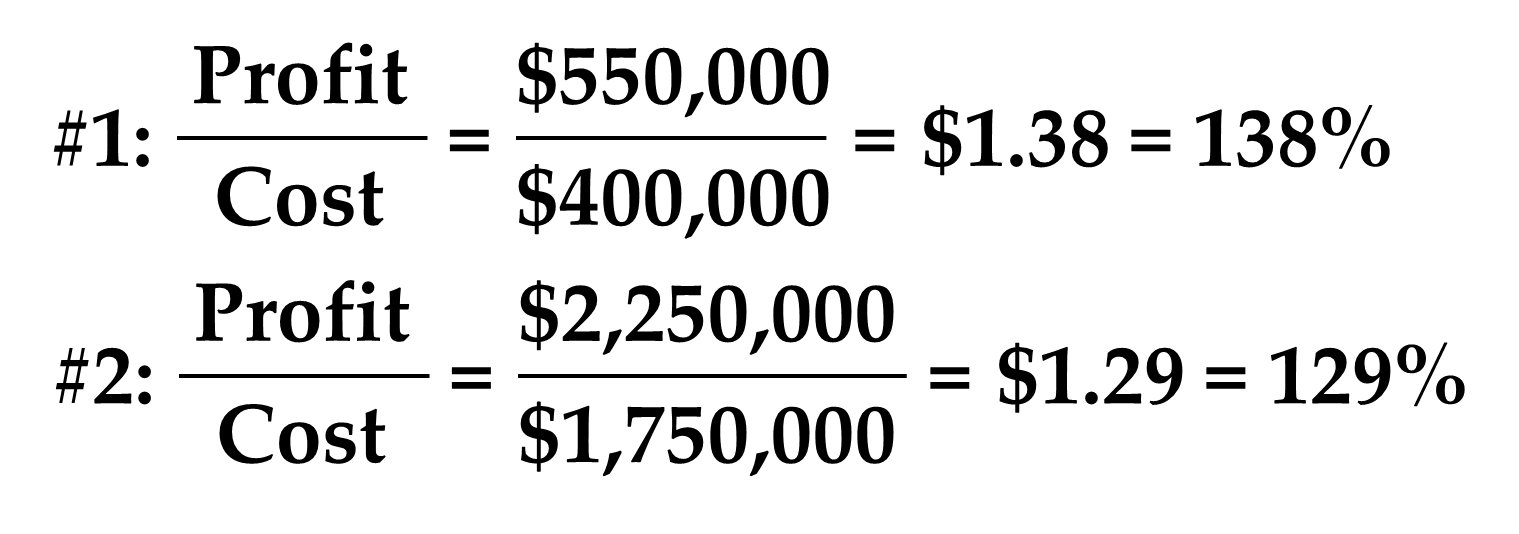Steps 5 and 6: Net Profitability Calculations
Introduction to Net Profitability
The next steps are to collate all statistically-estimated effects, (described above),
with any other financial information, such as one-off costs.
If an analysis has both cost and revenue implications, you can combine these into
a profitability analysis. The following sections discuss aspects of such profit calculations.
Basic Profit
As you no doubt know, basic profit is calculated as revenue minus cost. Your first
point of interest would be to ensure that the outcome of your statistical analysis
is a positive profit. In many business situations, just having positive profit is
not necessarily good enough – you would want your profit to be high enough to beat
a cost of capital that is relevant to your business or the project involved.
Breakeven
Breakeven is the idea that you can calculate the conditions that achieve a minimum
level of profit, generally conditions that at least lead to zero profit. In other
words, analysts usually consider breakeven to have occurred at Profit = 0, although
as discussed in the previous section, sometimes a breakeven may be Profit > 0 to cover
a cost of capital.
Now, if your analytical analysis allows you to define an equation for profit, then
you can often calculate the conditions that achieve breakeven. Say, for instance,
that production levels are your variable of interest. If you know the price, the fixed
costs and the variable costs of production perhaps your simple profit equation is:
Profit = (Production levels * Price) – Fixed costs – (Production levels * Variable
cost)
If breakeven occurs at zero profit then perhaps you are interested in calculating
the production levels required to achieve this. So:
(Production levels * Price) – Fixed costs – (Production levels * Variable cost) =
0
Breakeven production level = Fixed costs/(Price – Variable cost)
See the example in Some Simple Examples of Business Extrapolation below for an illustration of a breakeven calculation.
Note that in some cases, organizations would demand a minimum cost of capital that
requires a higher-than-zero breakeven. Your finance courses would no doubt have taught
this principle.
Return on Investment
Introduction to ROI
Return-on-investment (ROI) is perhaps one of the most popular and important concepts
in modern business. It is a ubiquitous yet simple financial concept that expresses
how efficiently a certain business activity translates input money into profit. ROI
gives us a generic way of measuring this. The formula is as follows:
Figure 17.2 ROI Formula

As can be seen, ROI is a ratio. As with all ratios, when it is reduced to a single
figure then it expresses how many of the numerator to every one of the denominator.
Note that the numerator is profit and the denominator is costs. The following section
expands on the meaning of the ROI.
Interpretation of ROI
When reduced to a single figure, ROI means ”How many dollars of profit did we make
from every $1 of expenses we invested?”
So, in financial terms ROI is an efficiency measure expressing how much we made from
every dollar invested. ROI can be compared directly between projects.
ROI Example
Say that you have two projects. The first project cost $400,000 and made an estimated
$950,000 in revenue (i.e. $550,000 in profit). The second project cost $1,750,000
and made an estimated $4 million in value (i.e. $2.25 million in profit).
The ROI estimations of the two are as follows:
Figure 17.3 Comparison of Two Program ROIs

Interestingly, even though the second program made considerably more profit in absolute
terms, it has a smaller ROI. The first one made $1.38 for every $1 invested; the second
made only $1.29 per $1 invested. Therefore, the first program made more efficient
use of every dollar invested, and is the more profitable program.
One can also express ROI as a percentage, by multiplying it by 100. If you do this,
then it expresses the rate of return you are achieving over and above expenses.
Expressing ROI as a Percentage
For example, an ROI of 145% (which would correspond with an ROI of $1.45) is a 145%
rate of return on expenses. This can be compared with the project cost of capital:
the criterion would be that the ROI percentage should exceed the cost of capital.
Most of you have probably studied ROI in a previous finance course, but the point
of discussing it here for business statisticians is that ROI can often form the final
step of an extrapolation from statistics to business outcomes.
Last updated: April 18, 2017
..................Content has been hidden....................
You can't read the all page of ebook, please click here login for view all page.
